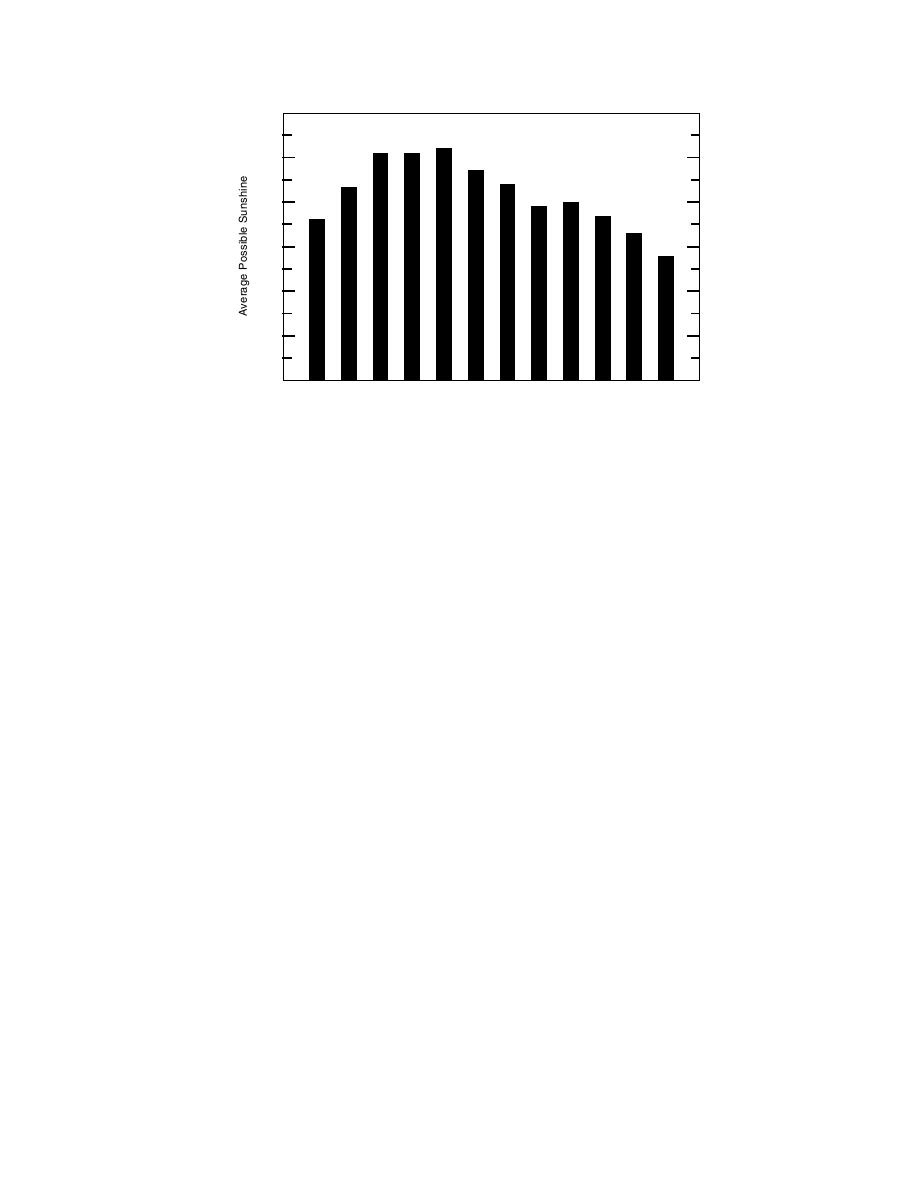
60
50
40
30
20
10
0
Feb Mar
Apr May
Jun
Jul
Aug Sep
Oct
Nov Dec
Jan
Figure 23. Average percent possible sunshine at Anchorage Inter-
national Airport from 1955 to 1993. (After ACRC 1997a.)
North winds account for more than 30% of all obser-
days each winter (NCDC 2000a). The depth of snow
vations during October through March. The second
on the ground rarely exceeds 38 cm; during January
most prevalent winds during this period are from the
and February it averages about 27 cm (Fig. 22).
northeast, accounting for an additional 15% of obser-
The mean daily temperature averages above freez-
vations (see wind roses in Appendix E). Winds are
ing from April 8 to October 23 (NOS 1994). Spring-
normally light, but strong "Northers" occasionally re-
time conditions begin around the end of April with a
sult from rapidly deepening storms in the Gulf, when
predominance of warm days and cool nights and the
the Alaskan interior is dominated by a large, cold air
disappearance of the snow cover. On average the last
mass. Rainfall sometimes occurs, but most precipita-
day in which the temperature drops below freezing is
tion in winter is in a frozen form. The average total
May 15, but it has been as late as June 6 (NOS 1994).
snowfall in the Anchorage area lowlands ranges from
March has the greatest number of predominantly clear
1.8 to 2.3 m annually (NCDC 2000a), with much
days for all four Cook Inlet stations. April has the least
greater amounts falling in the higher elevations of the
number of days with measurable precipitation and the
Chugach Range. Winter typically arrives a month ear-
lowest monthly precipitation for the year (Fig. 22).
lier and ends a month later from 300 to 600 m above
Only about 13% of the annual precipitation total falls
sea level (asl). The snow in the Anchorage area is usu-
during March through May, and each of those months
ally light and dry, having a low liquid water equiva-
averages more than 50% total possible sunshine (Fig.
lent. It occurs on 2025% of all midwinter days but
23). The average last date of measurable snowfall is
usually comes in small daily amounts. Snowfall
April 14, but snow has fallen as late as May 6. As in
amounting to 10 cm or more occurs on only 2% of
September, north and south winds are equally preva-
those days. Freezing rain and ice fogs are rare in An-
lent in April and total more than 40% of all observa-
chorage, but warmer fogs occur on an average of 15
tions.
63



 Previous Page
Previous Page
